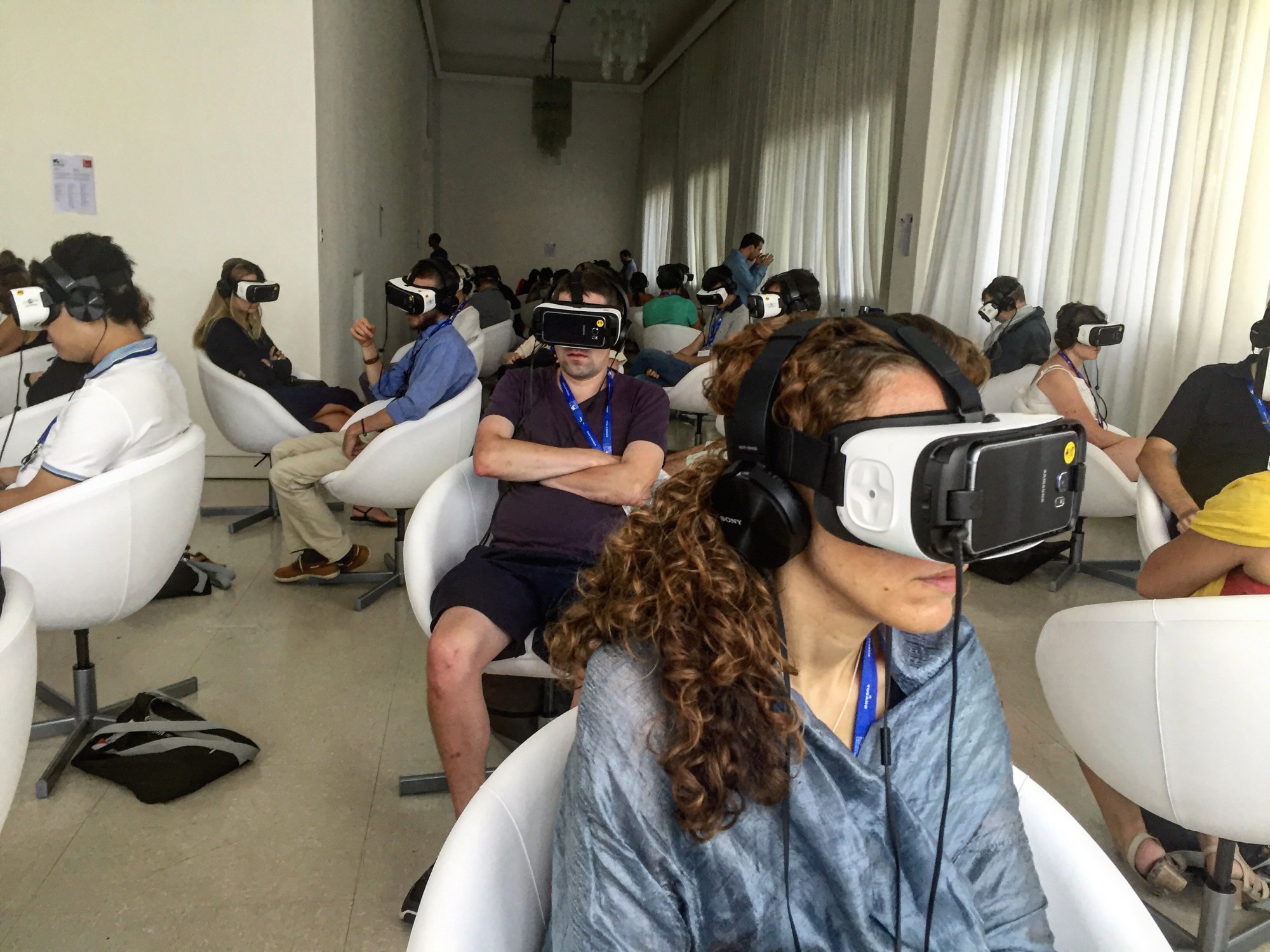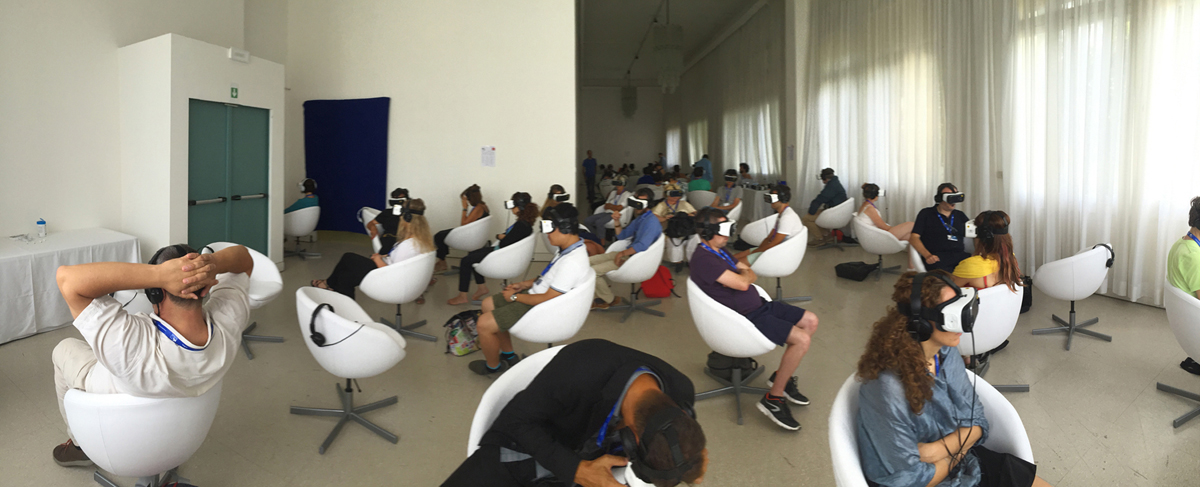
- Festivals
VR Jesus in Venice: Is Virtual Reality Cinema’s Second Coming?
While festivalgoers are taken with the mundane business of premieres, red carpets, press conferences and generally binging on (and arguing about) films, the future of the art form is on view in a room tucked on the Casino mezzanine here. At least that’s what the Virtual Reality boosters would like you to think. This year the Venice festival program includes continuous screenings of something called Jesus VR – The Story of Christ. Those showings take place in a room fitted with about 50 swiveling chairs, each with a Wi-Fi headset and earphones which viewers don. When the movie is in progress this makes for the somewhat eerie sight of 50 people moving their heads every which way in complete silence. Some “look” up some down or turn to take in sweeping vistas which only they can see inside their goggles, each one immersed in his/her own personal viewing experience.

Viewers immersed in "VR Jesus"
HFPA/Luca Celada
That’s why it’s called “immersive technology” and it puts each spectator in the center of the 360-degree action. In this case the film opens with the Magi riding through the desert led by the prophetic star to the manger where Joseph and Mary are tending to the newborn child. As the Wise Men enter the hut we can observe them crossing the threshold, or we can turn our head around to see the Holy Family, or again the animals placidly looking on … the point of view is, in other words, no longer up to the director but to the spectator. This is, of course, a known entity to millions of first-person gamers, and similar systems have been shown at other festivals like Sundance, which has been partnering with Oculus Rift (the headgear company acquired by Facebook for $2 billion a couple of years ago).
But Jesus VR is the first movie to be shot in VR. Admittedly it’s a (rather plodding) 40 minutes, but the producers (which include Enzo Sisti and William Fulco who previously worked on Mel Gibson’s The Passion of the Christ) are apparently banking on a built-in audience of 2 billion Christians – and even more on phone users, as smart phones can be easily converted into VR sets by means of a cardboard holder. The Venice demo is managed by the French company Divrsion, which opened Europe’s first Virtual Reality screening room in Paris last May. “We have shown three titles so far” says Camille Lopato, the company’s founder who organized the Venice screenings to promote the form with critics and encourage producers to create more virtual reality content.
That will be key to a possible future for wraparound cinema. And, we would venture, films may need to be slightly more dynamic than VR Jesus, which is mainly made up of shots of the Messiah speaking to people. We’d like for instance to see films with multiple foci of action so that they are truly navigable by the viewer, say a battle scene directed by Mel Gibson or Steven Spielberg … That last one is not likely to happen as the director has come down pretty forcefully against VR as a story telling medium, deeming it, as many still do, more appropriate for video games than narratives. And if you are used to immersive gaming you might have the frustrating urge to interact with the film’s world, move farther or closer to the action, but this an observer’s medium – the only option here is pretty much to choose where to look.
Some technical issues clearly remain, beginning with the image resolution, at present it is reminiscent of an old tube TV seen up close (that’s because of the extremely large image needed for navigation and the compression necessary to deliver it to multiple headsets). That, however, is most likely just a question of time. The real question is if the new medium will find authors interested in inventing new expressive languages.
In the meantime the VR here in Venice is reminiscent of the Lumière brothers days whose demos to the astonished public contained but the smallest promise from which a century of film grew. Like those early days, not coincidentally perhaps, the Bible is still the go-to source for material. Hopefully a lot more is still to come.

